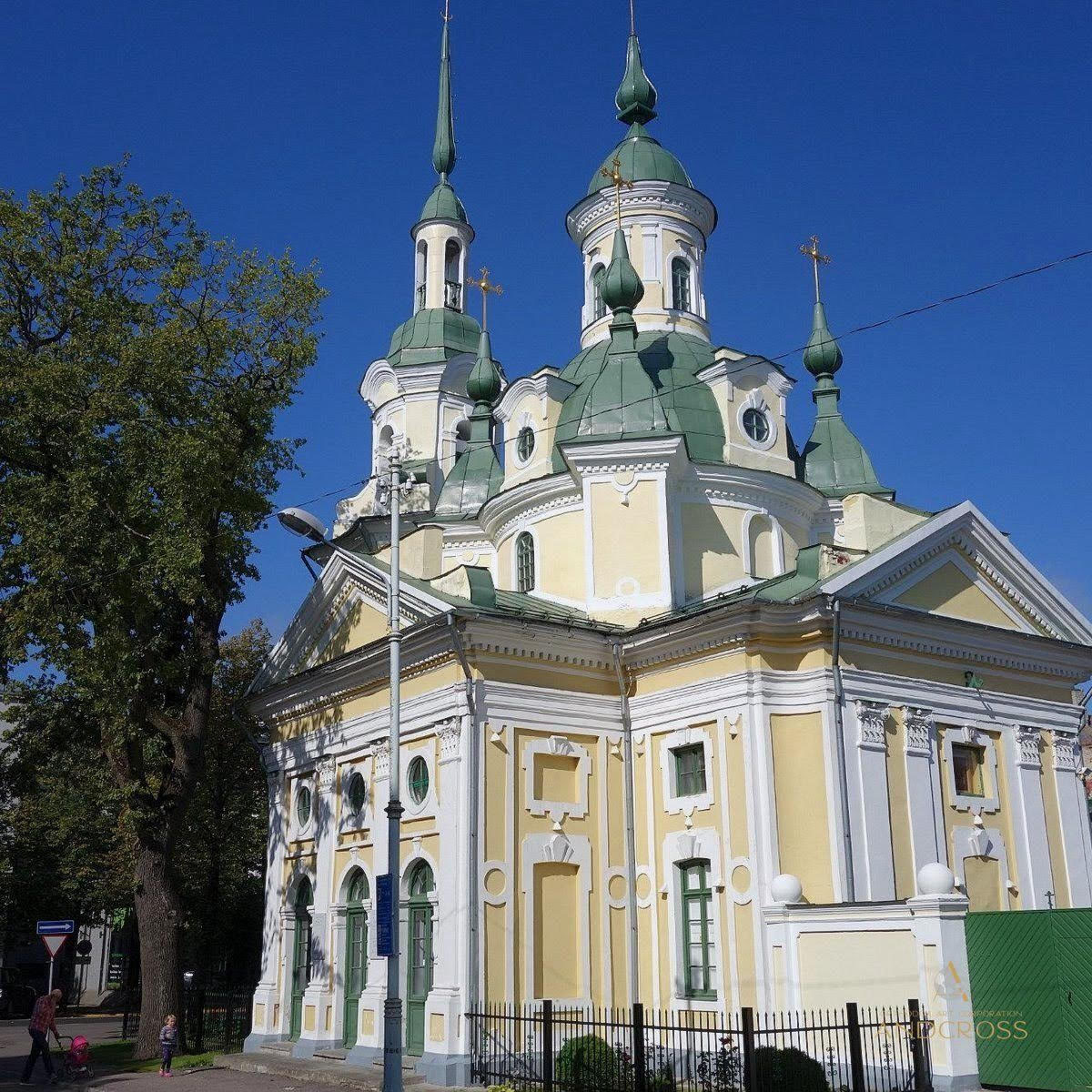
St Catherine’s Church located in the city of Pärnu is one of the oldest Orthodox churches not only in Estonia but also in the Baltic States.
Its background can be traced back to the Great Northern War, during which the Swedish city of Pärnu passed under the control of the Russians. Then Orthodox people began to settle in those lands, which created the natural need of building a place for praying. Since 1710, the Roman Catholic Church of St John the Apostle had been used for these purposes but soon the Church of the Assumption of the Mother of God was erected. And they also built the church of Saint Prince Alexander Nevsky at the military garrison. The construction wasn’t durable, and in the early 1790s, it was dismantled due to decay. Today, the only reminder of that church is the icon, which is still kept in the city.
A new stage in the life of the Orthodox people in these lands is associated with the name of the Russian Empress Catherine the Great. In 1764, she visited the city and ordered the construction of a new stone church. She also gave money for this and took the construction under her royal control.
5 years later, the church was opened to parishioners. Initially, it was consecrated in the mane of the Assumption of the Mother of God, like the old building. However, one year later, it received its modern name. There’s no evidence why it was renamed and who made this decision.
The construction of the building was under the supervision of architect Pyotr Yegorov. The church is a beautiful example of the Baroque style. The main dome is surrounded by four smaller domes. And on the west side, there’s an elegant bell tower, which resembles a needle. The facade is richly adorned and decorated with a pediment and cornices. Inside, there is a three-tiered iconostasis, also created by Pyotr Yegorov. Architectural historians believe that this church in Pärnu inspired the architects who built other Orthodox churches in the Baltic States because they have something in common.
Gradually, more locals began to convert to Orthodoxy. The statistics found in the archives state that more than 10,000 Estonians came to faith between 1846 and 1847. But a language barrier became an obstacle to the union of brothers in faith. Thus, there was a need to build a new church to hold church services in Estonian. All issues related to the beginning of construction were resolved at the end of the 19th century, and the Lord’s Transfiguration Orthodox Church was consecrated in 1904. Russian-speaking parishioners were separated from the Estonian brothers in faith. The Russians attended St Catherine’s Church, the Estonians went to the Transfiguration Church. However, this didn’t in the way of the unity of the Orthodox people. It’s proven by the fact that the first senior priest of the Estonian church, Nikolai Tsvetkov, was Russian. And the senior priest in the church for the Russian-speaking believers was Mihhail Suigusaar, a born Estonian. Each of them spoke both languages.
In the first half of the 20th century, most churches of the former Russian Empire were ruined, looted, or simply closed. St Catherine’s Church, which was located on the territory of independent Estonia, remained safe and sound. Despite the change of government, there always have been prayers there.
Pilgrim Ecclesiastic Educational Centre Andcross






